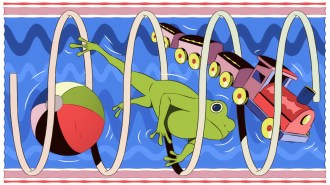Unexpected observations at a Japanese particle accelerator may signal the presence of previously unknown subatomic matter.
The conjecture, from the so-called Belle team at the High Energy Accelerator Research Organization (KEK) in Tsukuba, was inspired by the team’s measurements of a specific type of decay of fundamental particles called bottom, or b, quarks and their antimatter counterparts, anti-b quarks.
Such measurements may ultimately help explain why there is so little antimatter in the universe, although matter and antimatter were presumably created equally in the Big Bang. The measurements could also point to alternatives to the prevailing theory of particle physics, known as the standard model.
Theorists have calculated just how different the decay rates of b and anti-b quarks should be. The predicted value for the newly measured disparity, which is a type of so-called charge-parity (CP) violation, is 0.73 ± 0.06.
The preliminary value the Belle team reported at a conference last month at Fermi National Accelerator Laboratory in Batavia, Ill. is –0.96 ± 0.50. However, another team, dubbed Babar, at the Stanford (Calif.) Linear Accelerator Center (SLAC) finds a value of 0.45 ± 0.43–nearly what the standard model predicts.
“If [the Belle value] were the only measurement, we would be thinking it is pretty good evidence that there is something . . . beyond the standard model,” comments SLAC’s Helen R. Quinn. For instance, there could be yet-undiscovered heavy particles that interact differently with quarks than with antiquarks, she says.
However, because the two teams’ CP violation values don’t agree, she and other physicists are waiting for both groups to collect additional data.
In previous studies of a different type of b-quark decay, both teams reported values for CP violation in agreement with the standard model (SN: 3/3/01, p. 143: Available to subscribers at Physicists get B in antimatter studies).
****************
If you have a comment on this article that you would like considered for publication in Science News, send it to editors@sciencenews.org. Please include your name and location.






